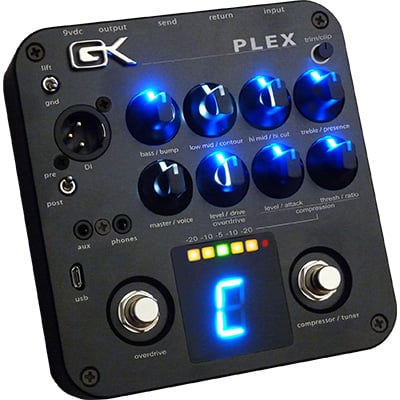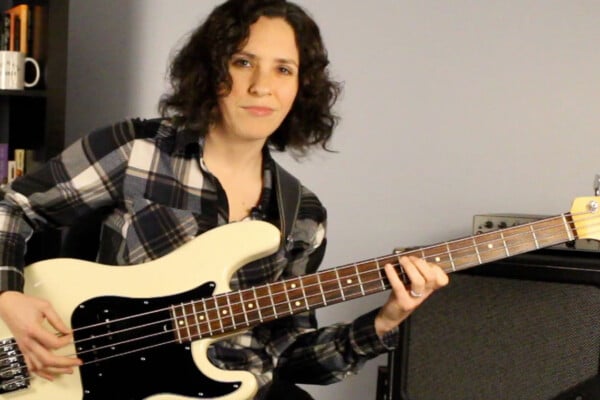Creative Bass Lines: Using the Melodic Minor Scale To Navigate on a Minor ii-V-i Chord Progression

Creative Bass Lines is sponsored by Gallien-Krueger. GK’s Plex preamp combines 47 years of amp design experience with state of the art technology. Check it out.
Welcome back to another column, and today we’re diving further into jazz-related harmony with a look at starting to get inside two of the most useful modes from the melodic minor scale.
The full line is demonstrated right after the opening title credits, with a little backing groove, and then during the video, I dissect and explain it for you.
The ii-V-i line in the video uses the two modes discussed below with one chromatic passing note (it’s in bar 2 – the E natural) added for a little extra color in the line itself. I hope you find it illuminating. Practice it slowly, and get the line comfortable under your fingers.
I give you a couple of suggestions for ways to look at fingering the Altered Scale and it’s parent Melodic Minor scale too during the video.

NOTE: You do not have to be able to read music for this, but I have included the line written out in case you do.
There’s also a slow version I play during the video so you can pause the video and learn it that way too-And this also helps you to see the suggested fingering I am using.
The Melodic Minor is the parent scale that yields both the modes I am using in the video.
The Melodic Minor Scale in the jazz form is the same structure ascending and descending, and it contains: Root, Perfect 2nd, Minor 3rd, Perfect 4th, Perfect 5th, Major 6th, Major 7th.
NOTE: If this is new information to you, then initially you can even think of it as a Dorian with a Major 7th, but ultimately you want to aim to learn the Melodic Minor as a scale in its own right. It’s incredibly useful for navigating complex harmony in jazz especially.
So a C Melodic Minor Scale would contain: C, D, E?, F, G, A, B, C.
And it’s 6th mode (Locrian Natural 2nd.) contains the same notes. Just starting on the 6th degree like this: A, B, C, D, E?, F, G, A.
Again, to remind us- Locrian Natural 2nd is the sixth mode of the melodic minor scale. In the video, I use A Locrian Natural 2nd over an A-7 b5 chord.
Then in our video, we have the altered scale used over the Altered Dom 7th V Chord. The altered scale is the 7th mode of the melodic minor scale. We construct it using its parent melodic minor scale’s musical DNA in the same fashion as discussed above.
So if (as in the video for example) we are using a D Altered scale over a D7 #5 b9, we can say that this D Altered scale is actually derived from E? melodic minor.
See below:
E? Melodic Minor: E?, F, G?, A?, B?, C, D, E?.
D Altered Scale : D, E?, F, G?, A?, B?, C, D.
Rufus Philpot is a performer and educator living in Los Angeles who has performed and or recorded with everyone from Scott Henderson, Allan Holdsworth, Virgil Donati and Tony MacAlpine to Randy Brecker, Tom Scott, Gary Novak and Marvin "Smitty" Smith. For more, check out his website.



